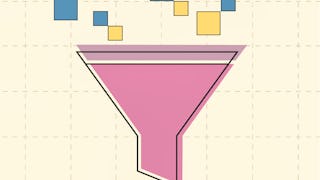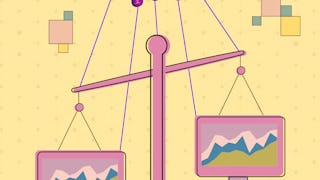Learn the foundations of data science by exploring, transforming, and visualizing data with R. In this course, you’ll develop core skills in exploratory data analysis and statistical thinking including: using visualizations to uncover patterns, identifying trends, and generating insights.

Saving $160 on access to 10,000+ programs is a holiday treat. Save now.


Data Visualization and Transformation with R
This course is part of Data Science with R Specialization


Instructors: Mine Çetinkaya-Rundel
1,672 already enrolled
Included with 
(17 reviews)
What you'll learn
Transform, visualize, summarize, and analyze data in R, with packages from the Tidyverse, using RStudio
Carry out analyses in a reproducible and shareable manner with Quarto
Learn to effectively communicate results through an optional written project version controlled with Git and hosted on GitHub
Skills you'll gain
Details to know

Add to your LinkedIn profile
3 assignments
See how employees at top companies are mastering in-demand skills

Build your subject-matter expertise
- Learn new concepts from industry experts
- Gain a foundational understanding of a subject or tool
- Develop job-relevant skills with hands-on projects
- Earn a shareable career certificate

There are 3 modules in this course
Hello World! In the first module, you will learn about what data science is and how data science techniques are used to make meaning from data and inform data-driven decisions. There is also discussion around the importance of reproducibility in science and the techniques used to achieve this. Next, you will learn the technology languages of R, RStudio, Quarto, and GitHub, as well as their role in data science and reproducibility.
What's included
4 videos11 readings1 assignment2 discussion prompts1 plugin
In our second module, we'll advance our understanding of R to set the stage for creating data visualizations using tidyverse’s data visualization package: ggplot2. We'll learn all about different data types and the appropriate data visualization techniques that can be used to plot these data. The majority of this module is to help best understand ggplot2 syntax and how it relates to the Grammar of Graphics. By the end of this module, you will have started building up the foundation of your statistical tool-kit needed to create basic data visualizations in R.
What's included
4 videos5 readings1 assignment1 discussion prompt1 plugin
In this module, we will take a step back and learn about tools for transforming data that might not yet be ready for visualization as well as for summarizing data with tidyverse’s data wrangling package: dplyr. In addition to describing distributions of single variables, you will also learn to explore relationships between two or more variables. Finally, you will continue to hone your data visualization skills with plots for various data types.
What's included
8 videos15 readings1 assignment2 discussion prompts1 plugin
Earn a career certificate
Add this credential to your LinkedIn profile, resume, or CV. Share it on social media and in your performance review.
Instructors

Offered by
Explore more from Data Analysis

Duke University

Duke University
Why people choose Coursera for their career




Learner reviews
17 reviews
- 5 stars
88.23%
- 4 stars
5.88%
- 3 stars
5.88%
- 2 stars
0%
- 1 star
0%
Showing 3 of 17
Reviewed on Nov 3, 2025
As a R beginner, this is very to start on and work my way up to programming

Open new doors with Coursera Plus
Unlimited access to 10,000+ world-class courses, hands-on projects, and job-ready certificate programs - all included in your subscription
Advance your career with an online degree
Earn a degree from world-class universities - 100% online
Join over 3,400 global companies that choose Coursera for Business
Upskill your employees to excel in the digital economy
Frequently asked questions
To access the course materials, assignments and to earn a Certificate, you will need to purchase the Certificate experience when you enroll in a course. You can try a Free Trial instead, or apply for Financial Aid. The course may offer 'Full Course, No Certificate' instead. This option lets you see all course materials, submit required assessments, and get a final grade. This also means that you will not be able to purchase a Certificate experience.
When you enroll in the course, you get access to all of the courses in the Specialization, and you earn a certificate when you complete the work. Your electronic Certificate will be added to your Accomplishments page - from there, you can print your Certificate or add it to your LinkedIn profile.
Yes. In select learning programs, you can apply for financial aid or a scholarship if you can’t afford the enrollment fee. If fin aid or scholarship is available for your learning program selection, you’ll find a link to apply on the description page.
More questions
Financial aid available,

